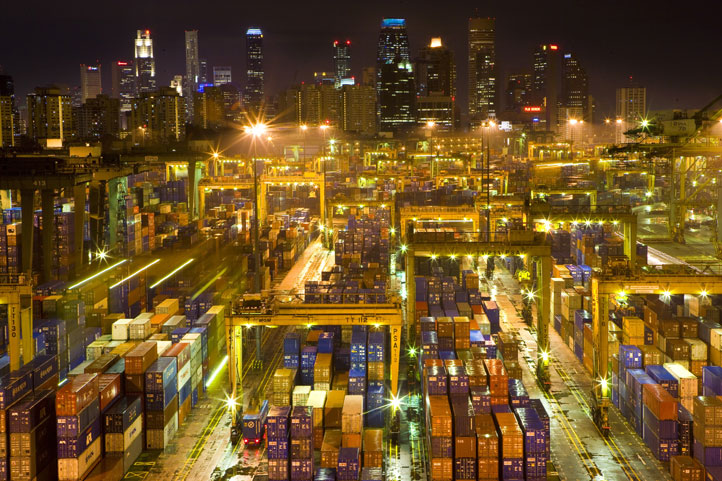World’s Biggest Ports for International Shipping in 2013
Guest Blog by John Collings
Shipping containers are the best cost-efficient way of intercontinental and international transport. They are cheap, large-scaled, and completely protected from the environmental influences and that is why they present the safest way to transport your merchandise overseas. Hired ship containers are most often left at the harbor on their delivery – retrieving an empty container is just not worth it.
World’s greatest harbors are overflowing with a great number of containers – for delivery, delivered, and some are abandoned as well. The categorization and surveillance of that number of containers as well as tracking its personal cargo is a difficult job. Many of them work 24/7 and have a great number of ships and cargo during the day.
Shanghai International Port, China
The Shanghai harbor opened in 1842 as a treaty port. It faces the East China Sea to the east and Hangzhou Bay to the south. Back in the early 20th century, Shanghai became not only the largest city in the Far East, but the largest port too. It survived many cutbacks during the early 90s but because of economic reforms and China’s large-scale international business expansion over the past decade, the Shanghai harbor became the world’s largest port and it took over the title from Singapore.
The Shanghai Port has both a deep-sea port and a river port on the Yangtze, Huangpu, and Qiantang River. Over 736 million tons of cargo (32.529 million TEU) passes through this harbor over the year, thus making it the most important gateway for foreign trade.
The Port of Singapore, Singapore
This port was opened in 1819 by a representative from the British Empire – Sir Stamford Raffles. Since its independence from the British Empire back in 1963, the port flourished. It held the title of the world’s largest port up until 2011. More than 423 million tons (29 million TEU) of cargo passes through this port each year. It holds 436 hectares of ground with 67 berths.

The Port of Hong Kong, China
The port of Hong Kong is located at the South Sea. It is one of the world’s largest ports and the second most important for the People’s Republic of China. It represents a trading gateway to China’s mainland – over 24 million TEU (twenty-foot equivalent units) of cargo is distributed through the Port of Hong Kong. This is the largest port in Southern China – more than 25 million passengers travel through each year.
It consists of 8 terminals that occupy 2.2 km2 of ground and a 6.592 meters deep water front. These terminals handle and maintain most of the container traffic in Hong Kong.
The Port of Shenzhen, China
This is the fastest growing harbor in China. Located at the Pearl River Delta, it covers 260 km of the coast line. The port of Shenzhen is divided into two large areas by the Kowloon Peninsula. The eastern area is in the Pearl River Estuary (about 37 kilometers south of Hong Kong) and it possesses a deep water port with safe natural shelters. The western area connects cities and countries along the river. Almost 22 million TEU of cargo a year goes through this harbor making it the 4th largest harbor in the world.
The Port of Busan (Pusan), South Korea
This port is located in the southern part of South Korea. This port dates from the late 19th century and now it handles about 50% of the total export cargo of the nation and almost all container throughputs. The port is perfectly located and provides a valuable advantage – it connects both North and South America with Asia. It occupies 180 kilometers of the shore and has almost 16 million TEU of cargo traffic over the year.
These are the top five of the world’s largest ports list. They represent powerful international connections and most of the world’s biggest industrial zones are located around them. The fact is that 7 out of 10 of the world’s biggest ports are located in China – ports in Rotterdam and Dubai are the only ones not in Asia. Almost 52 percent of the total overseas trade is done with shipping containers. The top list is subjected to constant alteration due to the developments that are taking place in the countries where they are located.
This was a guest blog by John Collings.
Author Bio:
John Collings is a full time employee with International Freight Forwarding Company who specialize in international Airfreight / Sea freight , Customs Clearance & Special Transport Projects – Allworld Logistics- as a export manager.
Click on the Guest Blog image above to email Raymond Rau if you would like Universal Cargo Management to publish an original blog from you.
![]()
Source: China


